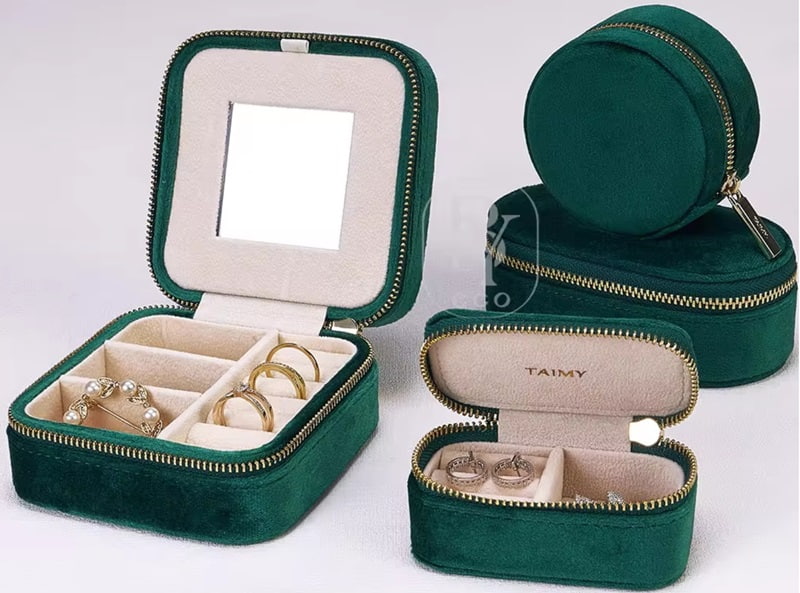You can share
- Share to Facebook
- Share to Google+
- Subscribe to our
- Share to Linkedin
- Share to Twitter

Competition in the jewelry industry is becoming increasingly fierce. Jewelry packaging boxes not only protect the outer shell but also enhance brand value. According to statistics, 30% of high-end consumers will directly decide whether to buy jewelry products based on the packaging texture. However, when many brands customize jewelry packaging boxes, they often suffer from damage to goods, customer complaints, and even damage to their brand image due to quality inspection omissions. This article systematically sorts out the six major inspection dimensions of jewelry packaging box quality based on industry standards to help you establish a scientific quality acceptance system.
(1) Color difference control (ΔE≤1.5)
A professional spectrophotometer (such as X-Rite i1Pro 3) will be used to inspect under a standard lightbox (D65 light source) and compare the color difference between the actual object and the design draft. When ΔE>1.5, the color difference can be discerned by the naked eye.
Note: Avoid visual inspection under fluorescent lights or natural light. Ambient light can lead to misjudgment.
(2) Surface treatment inspection
Hot stamping/silver stamping process: Use a 20x magnifying glass to observe whether the edge is rough, and the positive and negative tolerance must be ≤0.1mm.
UV coating: Rub repeatedly with your fingers 20 times to check whether there are scratches or peeling.
(3) Dimension accuracy verification
Use a three-dimensional coordinate measuring machine to scan the packaging box, focusing on the depth of the lining groove (error ±0.3mm) and the diagonal deviation of the box body (≤1mm).
(1) Load-bearing strength test
Static load-bearing: Apply a 5kg weight (simulating the total weight of jewelry + accessories) to the surface of the box body, and observe whether it is deformed after standing for 24 hours.
Dynamic compression resistance: Use a pressure testing machine to pressurize to 15kg at a speed of 10mm/min to detect the critical value of box collapse.
(2) Hinge opening and closing test
Open and close 5000 times continuously (simulating 3 years of use frequency) to check whether the metal hinge is loose or broken. The opening and closing angle must be stable at 45°~75°.
(3) Transport simulation test
According to the ISTA 3A standard, a six-sided random drop test (height 76cm) is carried out to check whether the box body is cracked or the lining is displaced.

(1) Environmental standard testing
Chemical substance testing: Pass SGS or REACH certification to ensure that the formaldehyde emission is ≤0.1mg/m³, and the heavy metal (lead, cadmium) content meets the EN71-3 standard.
Paper material: FSC certification ensures that the source of wood is legal, and the weight error is ≤5%.
(2) Material authenticity verification
Solid wood veneer: When a hot needle touches the surface, natural wood will emit a burnt smell, while artificial materials will produce a plastic smell.
Metal accessories: Magnet adsorption test, 304 stainless steel is non-magnetic, and zinc alloy is partially adsorbed.
(3) Odor test
Store the box in a closed space (such as a PE bag) for 24 hours and then open it. If there is no odor 20cm away from the tip of the nose, it is qualified.
(1) Printing accuracy detection
Use a line card to measure the minimum printing line width (hot stamping ≥0.1mm, UV printing ≥0.05mm).
LOGO edge jagged detection: Use a magnifying glass to observe whether the vector graphics appear pixelated.
(2) Special process acceptance
Laser engraving: Depth ≥0.2mm, character clarity needs to be tested by a 20x magnifying glass.
Magnetic buckle: Use a tensile force gauge to test the separation force, the ideal value is 3~5N (too loose to open, too tight to open).
(3) Anti-counterfeiting technology verification
RFID chip: Use a card reader to scan whether it responds within a distance of 5cm.
Invisible UV code: Detect the fluorescent reaction under a 365nm ultraviolet light.
(1) Protection performance test
The thickness of the pearl cotton buffer layer is ≥5mm, and the rebound rate after pressing is >90%.
Moisture-proof treatment: Place the packaging box in an environment with a humidity of 80% for 48 hours and check whether the box body is warped.
(2) Logo standard inspection
The printing position error of batch number, environmental protection logo, and brand information is ≤2mm.
Multi-language instructions must pass the ink friction test (3N force friction 10 times without blur).
It is recommended that brands follow the following process:
(1) First sample inspection**: Confirm the design restoratibefore mass production and retain the signed and sealed sample.
(2) Batch sampling**: Sampling according to AQL2.5 standard, unqualified batches will be returned.
(3) Third-party review**: Entrust ITS, BV, and other institutions to conduct blind testing to avoid the risk of supplier data fraud.
The quality inspection of jewelry packaging boxes needs to integrate scientific instruments and experience judgment. It is recommended that brands clearly define the inspection items, tools, qualification standards, and responsibilities. Only by standardizing the quality inspection process can the packaging box truly become a strong support for brand premium.